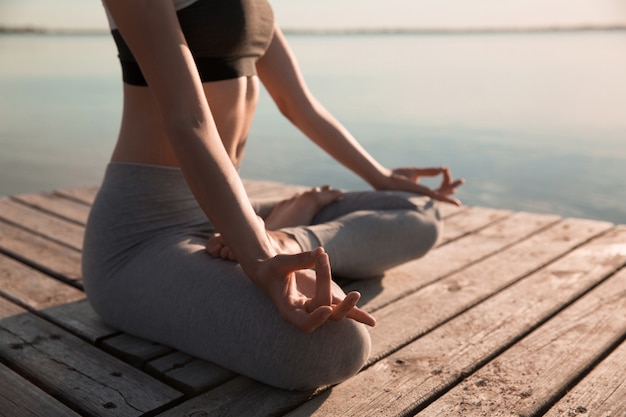
A yoga body isn’t just about flexibility; the age-old practice can actually boost your memory, and improve heart and bone health, according to Anna Magee.
Yoga has become hugely popular in the UK, with people spending around £790 million annually on classes and mats. While new and unusual types of yoga, like rage, naked yoga, and even dog yoga, are emerging, scientific studies are increasingly backing up its real benefits.
For example, researchers at UCLA discovered that a three-month yoga and meditation course was more effective than memory exercises at reducing age-related brain decline. Another study found it could improve sleep in breast cancer survivors.
When former advertising executive Lucy Edge, 53, experienced severe depression, she turned to yoga instead of the prescribed antidepressants. After spending six months in India learning yoga, she returned not with a “yoga goddess” body, but with happiness and contentment. She has since written three books about yoga and started Yoga Meds, a section on her website Yogaclicks.com that lists over 300 clinical trials documenting yoga’s benefits, including for arthritis, insomnia, and obesity.
One study from UCLA found that older adults who practiced yoga and meditation for 12 weeks had better spatial and visual memory, less depression and anxiety, and higher stress resilience. Though the study is small, it suggests the need for more research on yoga for brain and heart health as we age.
To enjoy the benefits of yoga, you don’t need to spend hours doing headstands. In the study, participants did just one hour of Kundalini yoga each week, which includes breathing techniques, meditation, and chanting mantras. They also spent 20 minutes daily on Kirtan Kriya, a meditation technique involving chanting, hand movements, and visualization.
For heart health, yoga can be as effective as conventional exercises like brisk walking. A 2014 review found that yoga might reduce heart disease risk, and it’s known to lower blood pressure, cholesterol, and weight – all risk factors for heart disease. According to Dr. Mike Knapton from the British Heart Foundation, yoga’s ability to reduce stress helps lower the risk of heart issues.
For beginners, yoga teacher Charlotte Watts recommends gentle poses to reduce stress, as detailed in her book, “The De-Stress Effect.” Anna Ashby, a senior teacher at Triyoga Studios in London, suggests Restorative yoga, where postures are held for extended periods, giving the nervous system a break.
Musculoskeletal physiotherapist and yoga teacher Sarah Shone developed yoga classes for back pain sufferers in the Primary Care Trust’s rehabilitation program, with remarkable success: 87% reported pain reduction. According to the National Institute of Clinical Excellence, yoga is great for lower back pain and can be adapted to suit various conditions. Shone emphasizes informing your teacher about any health problems and starting with gentler yoga styles like Hatha or Iyengar.
When getting started with yoga, having the right props can make all the difference. Choose a thicker mat if you have joint pain, and ensure it is lightweight and durable. The Elephant Cork Yoga mat from Valka Yoga, priced at £69.95, is a great option – it’s eco-friendly, versatile, made from organic and recyclable materials, and provides excellent joint support.
Yoga blocks are another useful prop, helping with difficult poses by adding extra length and stability. The Valka yoga block is sturdy and grippy, making it a popular choice.
Whether you’re flexible or not, yoga has something to offer everyone. Try Yin or Restorative yoga for a relaxed experience with lots of support. For a more energetic class, Vinyasa Flow links postures to breath in a dance-like sequence. If you like precision, Iyengar yoga focuses on alignment and uses props to help with poses. Anusara yoga combines alignment with flowing movements and upbeat music. For specific health issues, Yoga Therapy uses yoga techniques to aid healing.
Thinking about starting yoga? Here’s how to get started:
– For stress reduction, try Restorative or Yin yoga.
– For an energetic workout, try Vinyasa Flow.
– If you prefer precise, alignment-focused practice, try Iyengar yoga.
– For a fun, music-backed class, try Anusara yoga.
– For therapeutic benefits, try Yoga Therapy.
No matter your choice, yoga can enhance your well-being, making it a practice worth integrating into your life.